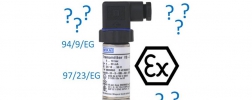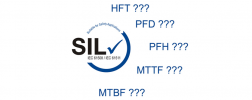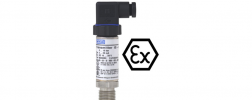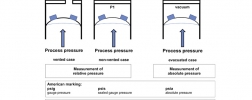In Europe plants or machines used in hazardous areas must comply with the ATEX directive 94/9/EC. Therefore, the pressure sensors or other measuring instruments approved according to ATEX must be used only in conjunction with ATEX approved isolated barriers if they use …
All posts by Stefan Heusel
Pressure sensors, transmitters and safety: SIL, PL, DIN EN ISO 13849 and IEC 61508 – Commonly used terms and abbreviations
Stefan Heusel | Know-howWhen using pressure sensors and pressure transmitters, our customers often ask for explanations of frequently used terms and abbreviations in connection with "SIL applications". SIL – which means Safety Integrity Level, and PL, which means Performance Level, are …
Ex pressure sensors and transmitters for ATEX Zone 0, Zone 1 or Zone 2 – markings of pressure instruments for use in a hazardous area
Stefan Heusel | Know-howThe field of application or the suitability of a pressure sensor for a hazardous area is designated by the marking on the device. As a matter of principle, intrinsically safe pressure sensors marked Ex ia can be used in zone 0 (the "most dangerous" area), whereby …
Fields of application for pressure sensors 3 – Absolute pressure sensors: why is it necessary to use absolute pressure sensors or pressure transmitters
Stefan Heusel | PressureElectronic pressure sensors usually measure the change in pressure through the deformation of a diaphragm. If this diaphragm is exposed to the process pressure on one side and "vented" on the other side (and thus exposed to the ambient pressure), the deformation is …
Fields of application for pressure sensors 2 – non-vented gauge pressure sensors: when unvented pressure sensors or transmitters are the best choice
Stefan Heusel | PressureIn most applications, gauge pressure measurement is required and therefore pressure sensors and pressure transmitters that measure pressure against the prevailing ambient pressure are commonly used for this. Those pressure sensors typically have a venting hole to …





